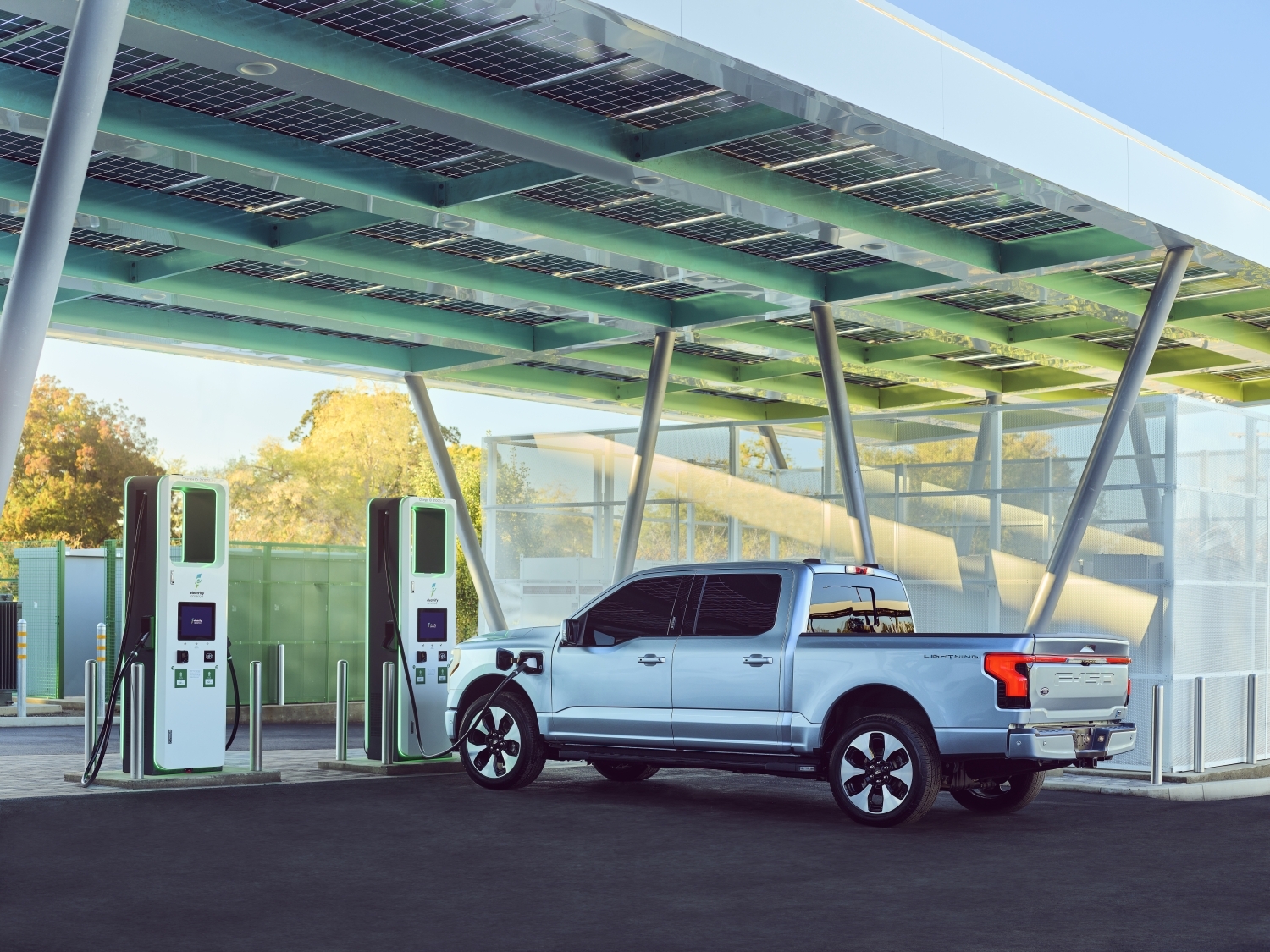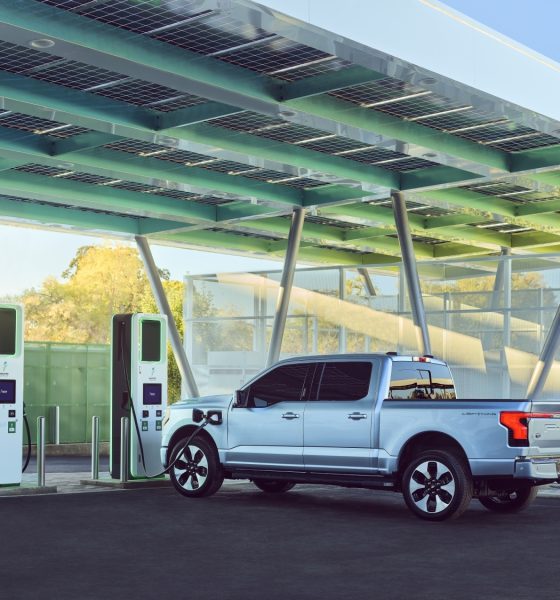

News
California Energy Commission pushes efforts to hold unreliable EV charging networks accountable
The California Energy Commission is taking steps to increase EV charging networks’ accountability and responsiveness to complaints. The efforts are timely as the number of electric vehicle owners in the state is growing at a quick pace.
Among electric vehicle makers, only Tesla has really solved the problem of long-distance travel in an all-electric car. This is largely due to the Tesla Supercharger Network, which provides a simple, quick, and reliable system for the company’s lineup of vehicles. Tesla’s Supercharger Network in the United States is still exclusive to Tesla as of writing, so non-Tesla EV owners are required to use other DC charging solutions for their vehicles.
This is where problems ensue since DC fast charging systems even in electric vehicle hubs like California are still far from very reliable. As noted in a Car and Driver report, EV charging networks may list a charger as “working” as long as the stations respond to a ping request from a remote center. The system is better than nothing, but it is prone to errors since charging stations can maintain cellular connectivity despite having issues such as jammed credit card readers, or software errors, to name a few.
The issue has been so notable that electric vehicle owners have come up with crowdsourced solutions to accurately rate DC chargers. Among these is the @rateyourcharge account on Twitter, which was created by EV group Out of Spec Studios to provide accurate reports of EV charger capabilities in the wild.
Amidst this environment, the California Energy Commission has shared plans to establish regulations for evaluating the reliability and availability of public electric vehicle charging stations. The commission is set to begin a public feedback process with the aim of defining “uptime” standards for EV chargers. These are expected to block excessive exemptions that would enable EV charging networks to avoid being held accountable for the reliability of their service.
The Commission also noted that it would no longer rely on self-reported claims from EV charging network providers regarding the availability and uptime of public charging stations. Instead, the commission plans to gather data from various sources to gain feedback from the public about the reliability and availability of EV charging stations. This feedback could include reports of non-functioning stations that are posted on apps and other platforms.
Apart from this, efforts are underway for California to evaluate the availability of EV charging stations at the individual station level instead of the overall site. This is quite different from the draft standards being developed by the National Electric Vehicle Infrastructure (NEVI) program, which could result in some charging sites getting a 100% score just because one stall is functioning. EV charging networks generally prefer this system, but electric vehicle owners are the ones that end up with the shorter end of the stick.
Providing fast and reliable charging solutions to electric vehicles is no small task. Non-Tesla Supercharger networks like Electrify America have to cater to numerous brands of cars with equally numerous types of software, and details such as payment options are abounding. Managing membership plans for electric car owners is also a pretty complicated task. But as electric vehicles become more mainstream, the time is right to demand more accountability among EV charging network providers. There will only be more EVs on the road in the coming years, after all, so it only makes sense to ensure that they are well-supported.
Don’t hesitate to contact us with news tips. Just send a message to simon@teslarati.com to give us a heads up.

News
Tesla FSD fleet is nearing 7 billion total miles, including 2.5 billion city miles
As can be seen on Tesla’s official FSD webpage, vehicles equipped with the system have now navigated over 6.99 billion miles.

Tesla’s Full Self-Driving (Supervised) fleet is closing in on almost 7 billion total miles driven, as per data posted by the company on its official FSD webpage.
These figures hint at the massive scale of data fueling Tesla’s rapid FSD improvements, which have been quite notable as of late.
FSD mileage milestones
As can be seen on Tesla’s official FSD webpage, vehicles equipped with the system have now navigated over 6.99 billion miles. Tesla owner and avid FSD tester Whole Mars Catalog also shared a screenshot indicating that from the nearly 7 billion miles traveled by the FSD fleet, more than 2.5 billion miles were driven inside cities.
City miles are particularly valuable for complex urban scenarios like unprotected turns, pedestrian interactions, and traffic lights. This is also the difference-maker for FSD, as only complex solutions, such as Waymo’s self-driving taxis, operate similarly on inner-city streets. And even then, incidents such as the San Francisco blackouts have proven challenging for sensor-rich vehicles like Waymos.
Tesla’s data edge
Tesla has a number of advantages in the autonomous vehicle sector, one of which is the size of its fleet and the number of vehicles training FSD on real-world roads. Tesla’s nearly 7 billion FSD miles then allow the company to roll out updates that make its vehicles behave like they are being driven by experienced drivers, even if they are operating on their own.
So notable are Tesla’s improvements to FSD that NVIDIA Director of Robotics Jim Fan, after experiencing FSD v14, noted that the system is the first AI that passes what he described as a “Physical Turing Test.”
“Despite knowing exactly how robot learning works, I still find it magical watching the steering wheel turn by itself. First it feels surreal, next it becomes routine. Then, like the smartphone, taking it away actively hurts. This is how humanity gets rewired and glued to god-like technologies,” Fan wrote in a post on X.
News
Tesla starts showing how FSD will change lives in Europe
Local officials tested the system on narrow country roads and were impressed by FSD’s smooth, human-like driving, with some calling the service a game-changer for everyday life in areas that are far from urban centers.

Tesla has launched Europe’s first public shuttle service using Full Self-Driving (Supervised) in the rural Eifelkreis Bitburg-Prüm region of Germany, demonstrating how the technology can restore independence and mobility for people who struggle with limited transport options.
Local officials tested the system on narrow country roads and were impressed by FSD’s smooth, human-like driving, with some calling the service a game-changer for everyday life in areas that are far from urban centers.
Officials see real impact on rural residents
Arzfeld Mayor Johannes Kuhl and District Administrator Andreas Kruppert personally tested the Tesla shuttle service. This allowed them to see just how well FSD navigated winding lanes and rural roads confidently. Kruppert said, “Autonomous driving sounds like science fiction to many, but we simply see here that it works totally well in rural regions too.” Kuhl, for his part, also noted that FSD “feels like a very experienced driver.”
The pilot complements the area’s “Citizen Bus” program, which provides on-demand rides for elderly residents who can no longer drive themselves. Tesla Europe shared a video of a demonstration of the service, highlighting how FSD gives people their freedom back, even in places where public transport is not as prevalent.
What the Ministry for Economic Affairs and Transport says
Rhineland-Palatinate’s Minister Daniela Schmitt supported the project, praising the collaboration that made this “first of its kind in Europe” possible. As per the ministry, the rural rollout for the service shows FSD’s potential beyond major cities, and it delivers tangible benefits like grocery runs, doctor visits, and social connections for isolated residents.
“Reliable and flexible mobility is especially vital in rural areas. With the launch of a shuttle service using self-driving vehicles (FSD supervised) by Tesla in the Eifelkreis Bitburg-Prüm, an innovative pilot project is now getting underway that complements local community bus services. It is the first project of its kind in Europe.
“The result is a real gain for rural mobility: greater accessibility, more flexibility and tangible benefits for everyday life. A strong signal for innovation, cooperation and future-oriented mobility beyond urban centers,” the ministry wrote in a LinkedIn post.
News
Tesla China quietly posts Robotaxi-related job listing
Tesla China is currently seeking a Low Voltage Electrical Engineer to work on circuit board design for the company’s autonomous vehicles.

Tesla has posted a new job listing in Shanghai explicitly tied to its Robotaxi program, fueling speculation that the company is preparing to launch its dedicated autonomous ride-hailing service in China.
As noted in the listing, Tesla China is currently seeking a Low Voltage Electrical Engineer to work on circuit board design for the company’s autonomous vehicles.
Robotaxi-specific role
The listing, which was shared on social media platform X by industry watcher @tslaming, suggested that Tesla China is looking to fill the role urgently. The job listing itself specifically mentions that the person hired for the role will be working on the Low Voltage Hardware team, which would design the circuit boards that would serve as the nervous system of the Robotaxi.
Key tasks for the role, as indicated in the job listing, include collaboration with PCB layout, firmware, mechanical, program management, and validation teams, among other responsibilities. The role is based in Shanghai.
China Robotaxi launch
China represents a massive potential market for robotaxis, with its dense urban centers and supportive policies in select cities. Tesla has limited permission to roll out FSD in the country, though despite this, its vehicles have been hailed as among the best in the market when it comes to autonomous features. So far, at least, it appears that China supports Tesla’s FSD and Robotaxi rollout.
This was hinted at in November, when Tesla brought the Cybercab to the 8th China International Import Expo (CIIE) in Shanghai, marking the first time that the autonomous two-seater was brought to the Asia-Pacific region. The vehicle, despite not having a release date in China, received a significant amount of interest among the event’s attendees.








